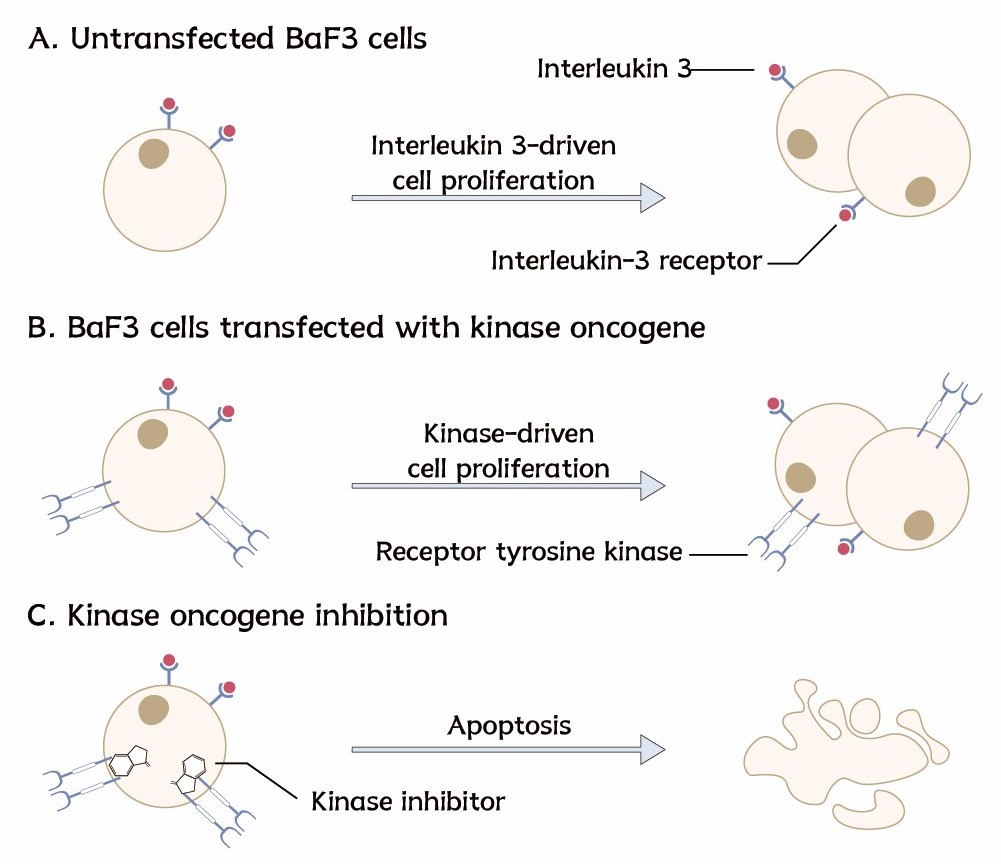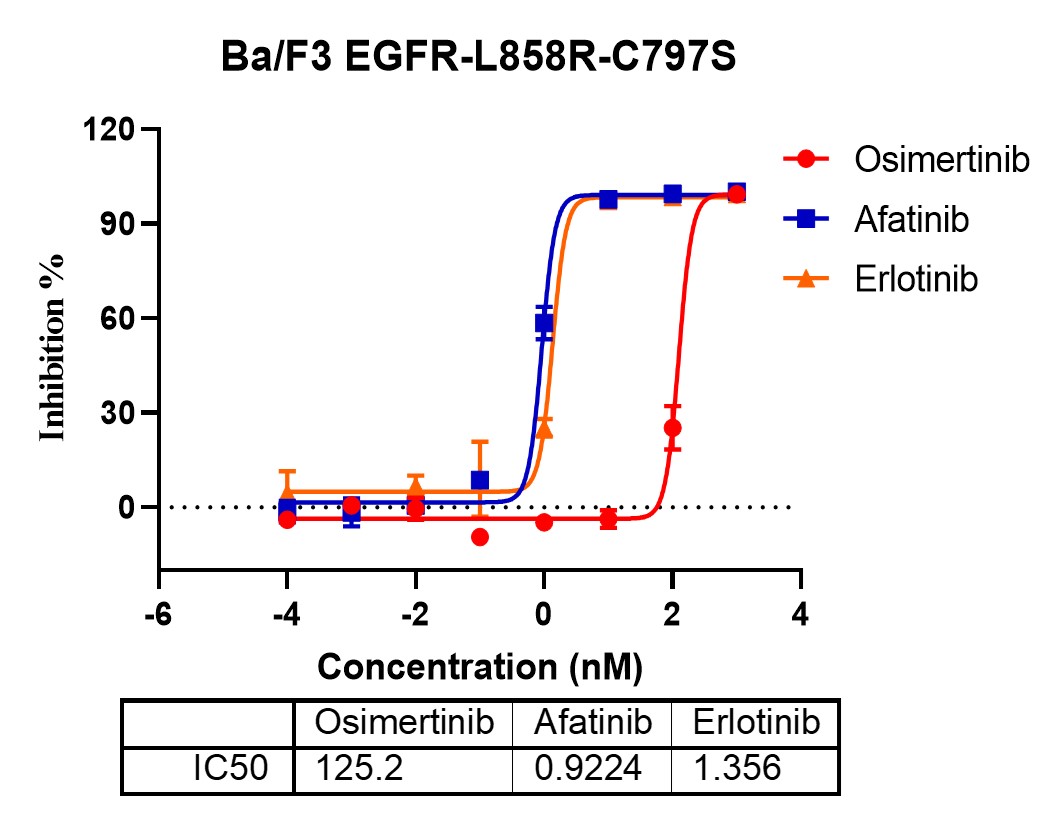The Ba/F3 cell line, a murine pro-B cell line that depends on interleukin-3 (IL-3) for growth and survival, serves as a popular system for oncology research. Ba/F3 cells have fast-growing characteristics and are easily transfected by commonly used overexpression systems. Additionally, with the expression of constitutively active tyrosine kinase or other driver gene mutations, Ba/F3 cells can survive independent of IL-3, while inhibitors of driver genes antagonize this effect. Therefore, Ba/F3 cells are ideal tools for exploring kinases or other oncogenes and their inhibitors.
ICE Bioscience currently has more than 300 Ba/F3 stable cell lines and has developed the EGFR Ba/F3 cell panel, the KRAS Ba/F3 cell panel, and dozens of Ba/F3 CDX (cell line-derived xenograft) models. We provide reliable tools for developing kinase/KRAS inhibitors.
Principle of BaF3 Cell Proliferation Assays

BaF3 cells, known for their dependency on interleukin-3 (IL-3) for growth, have been genetically modified at ICE Bioscience to create an array of cell lines expressing specific kinases and KRAS targets. This modification allows these cells to proliferate in response to specific stimuli, including the presence of target-specific drugs. Our BaF3 Cell Proliferation Assays utilize this principle to measure the effects of drug candidates on the growth of cells, serving as a direct indicator of their therapeutic potential.
Pharmacology Data

The inhibition curves for Ba/F3 cells expressing the EGFR-L858R-C797S mutation, treated with Osimertinib, Afatinib, and Erlotinib, are demonstrating the relative potency of each inhibitor against this specific EGFR mutant.
BaF3 Cell Panel Screening

Our comprehensive Ba/F3 stable cell lines, detailing the number of cell lines available for each target. The results of drug screening in EGFR Ba/F3 cell panel, showing the Log IC50 values for various EGFR mutants when treated with different inhibitors: Osimertinib, Afatinib, and Erlotinib. Each row represents a specific EGFR mutation and the color gradient reflects the potency of inhibition, with red indicating higher potency (lower IC50) and blue indicating lower potency (higher IC50).
CDX Models

Engineered Ba/F3 CDX Models: These models leverage Ba/F3 cells engineered to express specific kinases or mutations of interest, providing a powerful platform for studying targeted therapies under physiological conditions. They are particularly useful for assessing the potency and specificity of kinase inhibitors against desired targets.
With ICE Bioscience's BaF3 Cell Proliferation Assays, you are equipped to navigate the complexities of drug discovery with confidence. Our assays not only streamline the identification and evaluation of promising therapeutic agents but also provide a foundation for deeper understanding of their mechanisms of action. Partner with us to harness the full potential of your drug development endeavors and bring groundbreaking therapies to market faster.
We value your inquiries and are here to provide you with tailored solutions for your drug discovery and development needs. Whether you have questions, require more information, or are interested in discussing potential collaborations, our team of experts is just a message away.
Feel free to reach out to us.